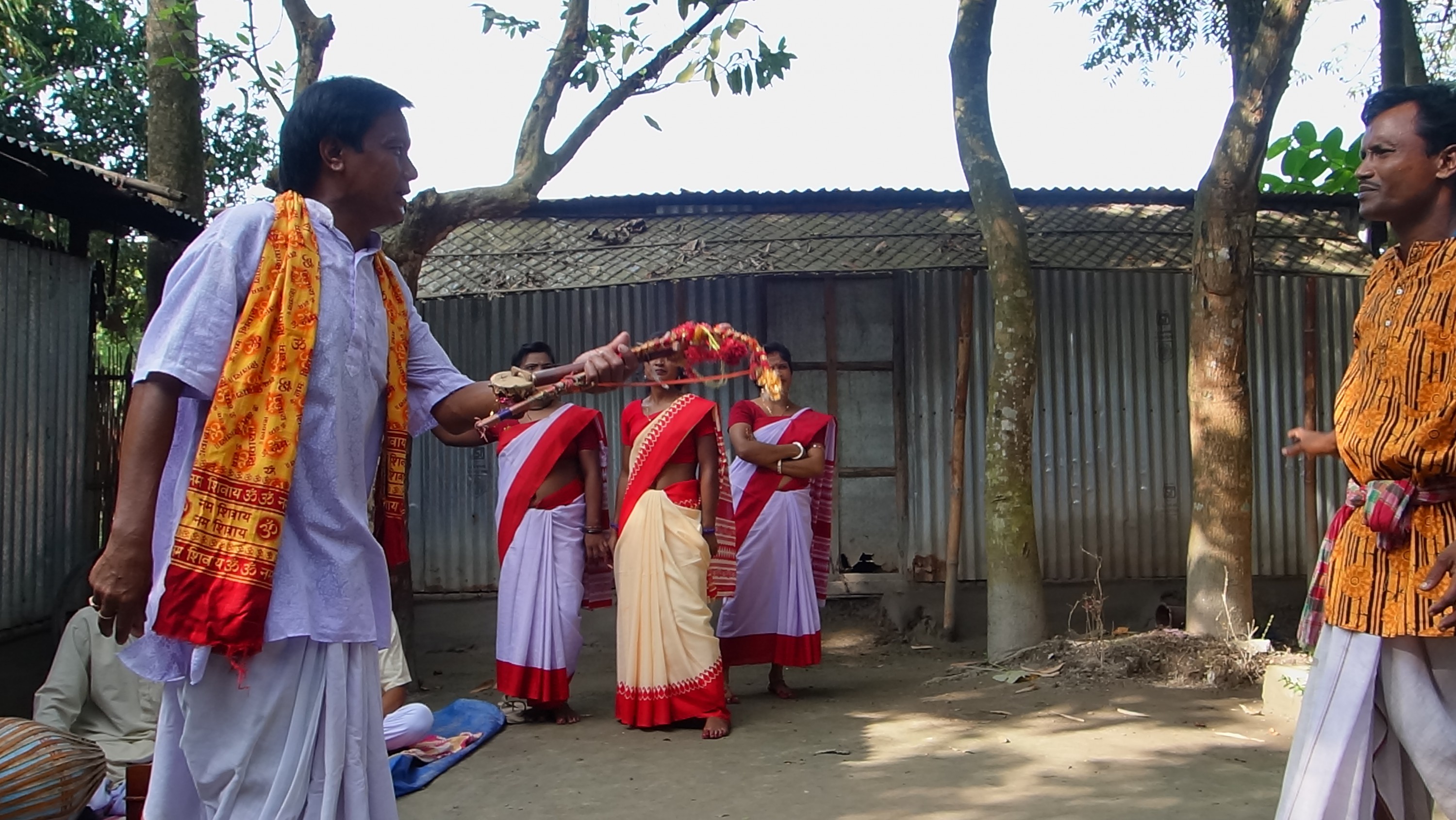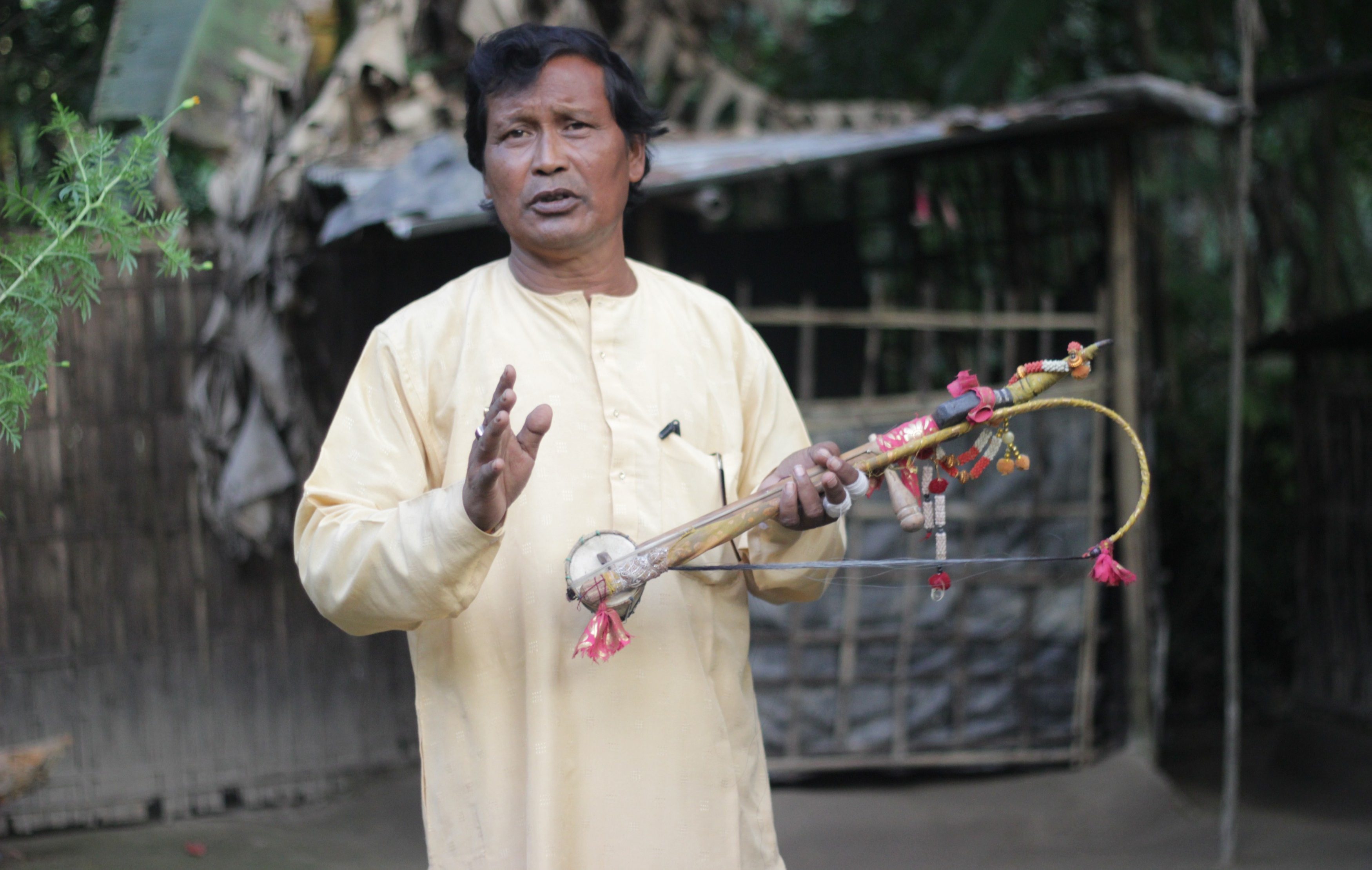Baanshinath Dakua, a man now in his 60s, started performing Kushan when he was a little boy of eight. If you visit Cooch Behar and Jalpaiguri districts of West Bengal during March-April and September-October, you may encounter Dakua and his group of performers who are fighting a fierce but quiet battle to keep the 500-year-old tradition of Kushan performance alive.
Kushan is a folk drama form based on The Ramayana in which artistes narrate tales through musical verse in local dialect. Usually men dressed as women – called chhokra or sokra – sing, dance and act during the performances. However, “these days, a lot of women too take part in the performances as male artists are losing interest in it” said Ratnabali Bose of Daricha Foundation that promotes Bengal’s folk culture.
The chief performer, known as geedal or mool, narrates in Bengali while the doari converses in local dialects like Rajbongshi or Rangpuri. Doari works as a bridge between geedal and audience along with cracking jokes, making comments and observations that are impromptu and often unrelated to the theme of the drama.
How it started
This form of folk theatre can be traced back to at least five hundred years when Koches ruled the northern parts of West Bengal, Assam and current northern Bangladesh. Although it was mainly practised by the Rajbangshi group, others like the Koch and Hajong absorbed the folk culture.
In the 14th century, poet Madhava Kandali translated The Ramayana to Assamese – the Shaptakando Ramayana – and Kushan is based on this. Kushan is not considered a “religious” offering, and Ram, Sita along with other key characters aren’t portrayed as heroic. It is meant for pure entertainment.
Instruments used in performances
It is believed that the name of the folk drama is derived from Sita’s second son Kush. A bamboo instrument bena is used in performances which geedal always holds while narrating, singing and acting the parts of several characters. These days however, artistes hardly play the bena, they just use it as a prop to maintain the tradition, said Bose.
Apart from bena, they use instruments like aar banshi (bamboo flute), a range of percussion instruments including akhrai and mondira, sarinja. Later, they have incorporated instruments like violin, harmonium too.
The performances
Kushan generally starts with a bandana or ashar bandana to Lord Rama or goddess Saraswati for an auspicious beginning. In the main segment, they use songs along with dialogue and dance.
Lachari is a folk rhythm used during dance while poyar songs are mainly based on bhawaiya and kirtan. Dhua songs are also used which sometimes do not have any connection with the main narrative. These songs may change in every performance but the tune remains same. The doari sings humorous popular folk songs during intervals to provide people some light-hearted entertainment, which is known as khosha. However, these days, artists perform khosha during the main performances.

Current Scenario
With Jatra troupes offering loud, colourful, dazzling melodrama, people are losing interest in kushan. Also, television is making people lose interest in the 500-year-old folk art. Kushan, in its desperate struggle to survive, has incorporated many elements of Jatra in order to attract audiences but the struggle remains the same.
Traditional artists like Dakua however, prefer not to tamper with the originality. He said, “Our ancestors performed and taught us this art. We have no right to distort it for survival.”
Dakua earns Rs.1,000 per show, and there are barely six to eight shows a year. Although the state government offers Rs 1,000 per month as remuneration for folk artists like him, that isn’t enough for survival. “During off-season, I work as daily labourer to run my family of six members along with farming a small plot.”
(Photo and Video Courtesy: Daricha Foundation)

